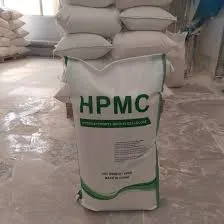
Dec . 05, 2024 14:18 Back to list
hydroxyethyl cellulose sds
Hydroxyethyl Cellulose (HEC) and Its Safety Data Sheet (SDS)
Hydroxyethyl cellulose (HEC) is a non-ionic, water-soluble polymer derived from cellulose, a natural polymer found in the cell wall of plants. Due to its unique properties, HEC has become a popular additive in a wide range of applications, including pharmaceuticals, cosmetics, food products, and industrial processes. In this article, we will explore the characteristics, uses, and safety considerations associated with HEC, focusing on the importance of the Safety Data Sheet (SDS).
Properties of Hydroxyethyl Cellulose
HEC is known for its exceptional thickening, emulsifying, and stabilizing properties. Its chemical structure, comprising hydroxyethyl groups attached to the cellulose backbone, allows it to dissolve in both cold and hot water, forming a viscous solution. The degree of substitution, which indicates the number of hydroxyethyl groups per cellulose unit, significantly influences the properties of HEC, such as viscosity and solubility.
Moreover, HEC is chemically stable, resistant to heat and shear, and does not alter the pH of a solution. These properties make it suitable for various applications, particularly where consistent performance is required.
Applications of Hydroxyethyl Cellulose
1. Pharmaceuticals In the pharmaceutical industry, HEC is often used as a binder, emulsifier, or thickener in liquid formulations. Its ability to enhance the viscosity of solutions helps in controlling the release of active ingredients in drug formulations.
2. Cosmetics and Personal Care HEC is commonly employed in personal care products like lotions, creams, shampoos, and gels. It helps improve the texture, stability, and spreadability of these products, providing a smooth application experience.
3. Food Industry In food products, HEC acts as a thickening agent and stabilizer, improving the mouthfeel and texture of products such as sauces, dressings, and dairy items. It also assists in keeping emulsions stable, preventing separation.
4. Industrial Applications HEC is utilized in various industrial applications, including adhesives, paints, and coatings. Its thickening properties aid in achieving the desired viscosity in formulations, enhancing performance during manufacturing and application.
Importance of the Safety Data Sheet (SDS)
Given the widespread use of HEC in different industries, understanding its safety profile is critical. This is where the Safety Data Sheet (SDS) comes into play. An SDS is a document that provides detailed information about the properties, hazards, handling, and safe use of a chemical substance.
hydroxyethyl cellulose sds

The SDS for HEC includes several sections
- Identification Information on the product name, manufacturer, and recommended uses. - Hazard Identification This section outlines the potential hazards associated with HEC, including any risk of irritation to skin or eyes, although HEC is generally considered to have low toxicity.
- Composition/Information on Ingredients Details about the chemical nature of HEC and its concentration.
- First-Aid Measures Recommendations on what to do in case of exposure, such as skin contact, eye contact, or ingestion.
- Fire-Fighting Measures Guidance on extinguishing fires involving HEC, highlighting its flammability characteristics.
- Accidental Release Measures Procedures for dealing with spills and leaks to minimize environmental and health risks
.- Handling and Storage Instructions for safe handling and optimal storage conditions to prevent degradation.
- Exposure Controls/Personal Protection Recommendations on protective equipment, such as gloves and goggles, to ensure safety when working with HEC.
- Toxicological Information Details regarding potential health effects, including any known allergic reactions or sensitivities.
Conclusion
Hydroxyethyl cellulose is a versatile and valuable ingredient in numerous industries due to its unique properties. However, it is essential to understand and communicate the safety information associated with its use. The Safety Data Sheet serves as a critical resource for manufacturers, formulators, and end-users, ensuring safe handling and application of HEC. By promoting awareness and understanding of HEC's safety profile, industries can continue to leverage its benefits while minimizing health and environmental risks. As research and regulatory standards evolve, it is crucial for stakeholders to stay informed and prioritize safety in their practices.
-
Versatile Hpmc Uses in Different Industries
NewsJun.19,2025
-
Redispersible Powder's Role in Enhancing Durability of Construction Products
NewsJun.19,2025
-
Hydroxyethyl Cellulose Applications Driving Green Industrial Processes
NewsJun.19,2025
-
Exploring Different Redispersible Polymer Powder
NewsJun.19,2025
-
Choosing the Right Mortar Bonding Agent
NewsJun.19,2025
-
Applications and Significance of China Hpmc in Modern Industries
NewsJun.19,2025







